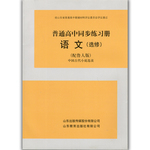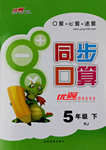题目内容
John Blanchard was studying the crowd making their way through the station. He was looking for the girl whose heart he knew, but whose face he didn' t, the girl with the rose.
When reading a book in a Florida library a year before, John became interested not in the contents of the book, but in the notes penciled in the margin (空白处). The handwriting reflected a thoughtful soul and beautiful mind. He discovered the former owner' s name in the front of the book: Miss Hollis Maynell.
He located her address and wrote a letter introducing himself. The next day he was shipped overseas to serve in the army. During the next year, they grew to know each other through the mail and their friendship developed. John requested a photograph, but she refused, saying if he really cared, it wouldn' t matter what she looked like. When the day finally came for him to return home, their first meeting was suggested--7:00 pm. at the Grand Central Station in New York.
She wrote," You' ll recognize me by the red rose I wear on my coat. "So now John was in the station to meet the girl with a rose.
As a pretty and slim girl in green came over, John noticed her blue eyes like flowers in spring. He walked directly towards her , entirely forgetting she was not wearing a rose. As John came closer to her, he saw another woman with a red rose stood nearby. Well past 40, this woman had graying hair done under a worn hat. Seeing the girl in green walk quickly away, John felt as if he were split(劈开) in two. He desired to follow that girl, but longed for the woman whose spirit had truly companioned and supported him.
The woman looked gentle and sensible. John went to her, saying, "1' m Captain John Blanchard. You must be Miss Maynell. I am glad to meet you here. May I take you to dinner?"
She replied with a smile, I don' t know what this is about. But the lady in green who just went by, begged me to wear this rose on my coat. She said if you asked me out to dinner, l' d tell you she is waiting for you in the big restaurant across the street. She said it was some kind of test!"
- 1.
John was eager to know the former owner of the book because
- A.he was very interested in the contents of the book
- B.he was impressed by the notes written by the owner
- C.the book offered him practical and valuable advice
- D.there was address of the former owner in the book
- A.
- 2.
What happened to John after getting in touch with Miss Hollis Maynell?
- A.He began to serve the army abroad
- B.He was seriously wounded in the war
- C.He went on a business tour in Europe
- D.He asked Miss Maynell for a photo
- A.
- 3.
What do we know about the woman with a rose?
- A.She was Miss Maynell' s close companion
- B.She was a conductor working in the station
- C.She knew nothing about John' s appointment
- D.She was paid to carry out a love test on John
- A.
- 4.
Which would be the best title of the text?
- A.The Meeting in the Station
- B.The Girl with a Rose
- C.A Soldier and a Girl
- D.A Meeting of the Heart
- A.
BACD
试题分析:本文讲述的是Miss Hollis Maynell和John Blanchard在多年交流以后的初次见面的戏剧的故事。
1.B 细节题。根据第二段2,3,4行John became interested not in the contents of the book, but in the notes penciled in the margin (空白处). The handwriting reflected a thoughtful soul and beautiful mind.可知他感兴趣的是对方所写的笔记。故B正确。
2.A 细节题。根据第三段第2句The next day he was shipped overseas to serve in the army.可知A正确。
3.C 推理题。根据文章最后一段1,2行She replied with a smile, I don' t know what this is about. But the lady in green who just went by, begged me to wear this rose on my coat.可知这个女的对于这一切一无所知,只是Miss Hollis Maynell临时找来的。故C正确。
4.D 主旨大意题。本文讲述的是Miss Hollis Maynell和John Blanchard在多年交流以后的初次见面的戏剧的故事。故D正确。
考点:考查故事类短文阅读
点评:本文讲述的是Miss Hollis Maynell和John Blanchard在多年交流以后的初次见面的戏剧的故事。本文考查细节题为主,细节题可以在文章中直接找到与答案有关的信息或是其变体。搜查信息在阅读中非常重要它包括理解作者在叙述某事时使用的具体事实、数据、图表等细节信息。在一篇短文里大部分篇幅都属于这类围绕主体展开的细节。做这类题一般采用寻读法即先读题,然后带着问题快速阅读短文,找出与问题有关的词语或句子,再对相关部分进行分析对比,找出答案。
试题分析:本文讲述的是Miss Hollis Maynell和John Blanchard在多年交流以后的初次见面的戏剧的故事。
1.B 细节题。根据第二段2,3,4行John became interested not in the contents of the book, but in the notes penciled in the margin (空白处). The handwriting reflected a thoughtful soul and beautiful mind.可知他感兴趣的是对方所写的笔记。故B正确。
2.A 细节题。根据第三段第2句The next day he was shipped overseas to serve in the army.可知A正确。
3.C 推理题。根据文章最后一段1,2行She replied with a smile, I don' t know what this is about. But the lady in green who just went by, begged me to wear this rose on my coat.可知这个女的对于这一切一无所知,只是Miss Hollis Maynell临时找来的。故C正确。
4.D 主旨大意题。本文讲述的是Miss Hollis Maynell和John Blanchard在多年交流以后的初次见面的戏剧的故事。故D正确。
考点:考查故事类短文阅读
点评:本文讲述的是Miss Hollis Maynell和John Blanchard在多年交流以后的初次见面的戏剧的故事。本文考查细节题为主,细节题可以在文章中直接找到与答案有关的信息或是其变体。搜查信息在阅读中非常重要它包括理解作者在叙述某事时使用的具体事实、数据、图表等细节信息。在一篇短文里大部分篇幅都属于这类围绕主体展开的细节。做这类题一般采用寻读法即先读题,然后带着问题快速阅读短文,找出与问题有关的词语或句子,再对相关部分进行分析对比,找出答案。

练习册系列答案
 海淀黄冈名师导航系列答案
海淀黄冈名师导航系列答案 普通高中同步练习册系列答案
普通高中同步练习册系列答案 优翼小帮手同步口算系列答案
优翼小帮手同步口算系列答案
相关题目